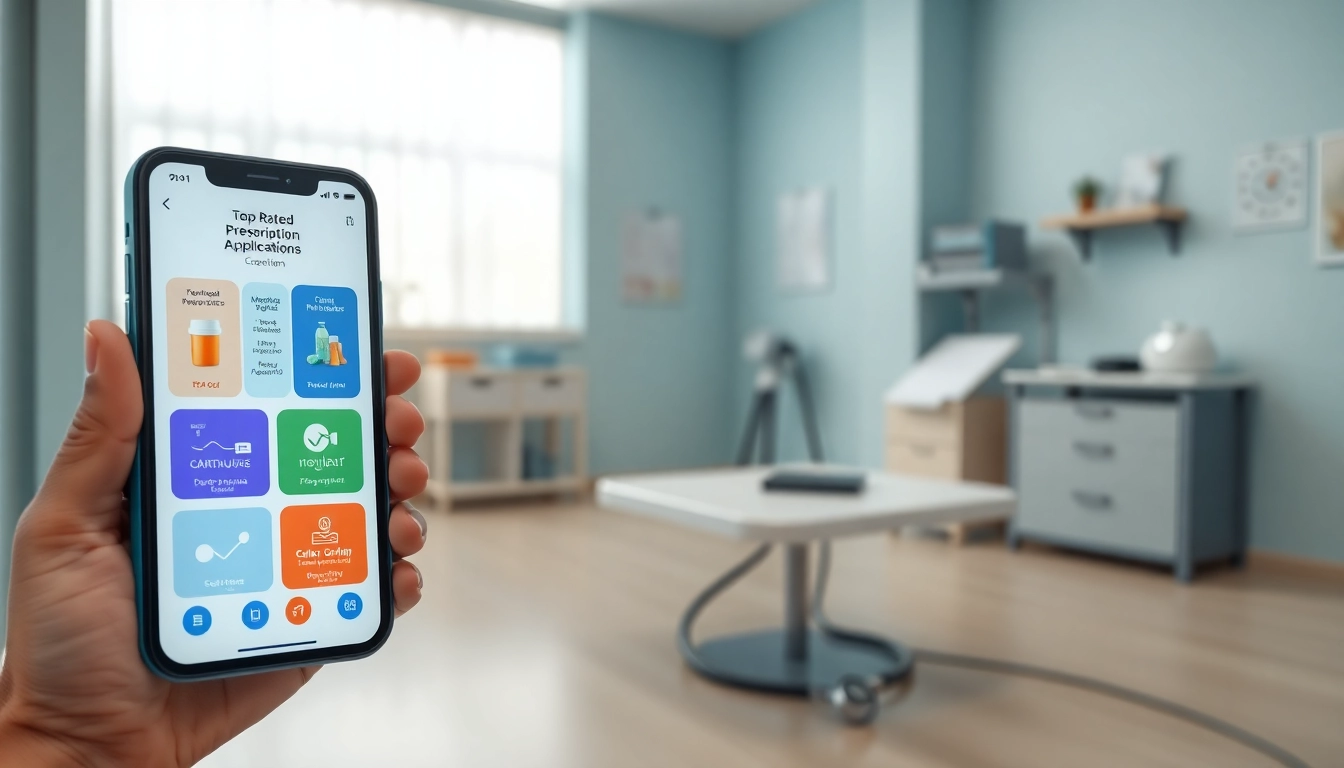Understanding E-Prescription Apps
What are E-Prescription Apps?
E-prescription apps are digital tools designed to facilitate the prescribing process in healthcare. These applications enable healthcare providers to send prescriptions electronically to pharmacies, significantly reducing the reliance on paper prescriptions. By utilizing secure and efficient communication protocols, e-prescription apps ensure that prescriptions are transmitted accurately and rapidly, contributing to enhanced patient safety and streamlined processing. As the healthcare landscape continues to evolve, these apps have emerged as vital components in modern healthcare systems, offering numerous advantages over traditional prescribing methods.
How E-Prescription Apps Work
The functionality of e-prescription apps revolves around a few key processes. First, healthcare providers input the patient’s medical information and prescription details into the app. This information is then transmitted electronically to a pharmacy of the patient’s choice. The process typically involves the following steps:
- Input of patient details and prescription items by the healthcare provider.
- Verification of the prescription against the healthcare provider’s database to check for allergies, medication interactions, and other critical patient data.
- Secure transmission of the electronic prescription to the selected pharmacy.
- Receipt of prescription confirmation back to the healthcare provider and notification to the patient.
Key Features of E-Prescription Apps
Several essential features define the utility and effectiveness of e-prescription apps:
- Integration with Electronic Health Records (EHR): Many e-prescription apps integrate seamlessly with existing EHR systems, allowing for easy access to patient history and medication records.
- Medication Interaction Checks: Automated alerts for potential drug interactions ensure patient safety.
- Refill Management: Patients and providers can track prescription refills efficiently, minimizing interruptions in medication adherence.
- User-Friendly Interface: Intuitive designs facilitate ease of use for both healthcare providers and patients.
Advantages of Using E-Prescription Apps
Improved Medication Management
One of the standout advantages of using eprescription apps is the enhancement of medication management. Patients often struggle with adhering to complex medication regimens. E-prescription apps simplify this process by providing reminders for medication intake, automatic refills, and alerts for potential side effects or interactions. This feature not only fosters adherence but also empowers patients to take control of their health. Additionally, healthcare providers are able to monitor prescriptions and identify non-compliance, allowing for timely interventions.
Increased Efficiency for Healthcare Providers
E-prescription apps significantly increase efficiency in healthcare settings. By streamlining the prescribing process, these tools reduce the time spent on phone calls and faxes, allowing healthcare providers to allocate more time to patient care. The reduction in paperwork leads to smoother workflows, minimizes errors associated with handwriting, and enhances communication between providers and pharmacies. Moreover, by instantly updating records within their systems, providers can view comprehensive patient profiles, leading to more informed prescribing decisions.
Enhanced Patient Engagement and Compliance
Engaging patients in their healthcare journey is crucial for achieving optimal health outcomes. E-prescription apps enhance patient engagement by offering features such as educational resources about medications, easy access to personal health data, and direct communication channels with healthcare providers. By making information readily available, patients are more likely to adhere to their prescribed therapies, ultimately leading to better health management. This empowerment facilitates an open dialogue between patients and providers, fostering stronger therapeutic relationships.
Addressing Challenges with E-Prescription Apps
Common Barriers to Adoption
Despite the clear advantages, several barriers can hinder the widespread adoption of e-prescription apps. These include:
- Infrastructure Limitations: Some healthcare facilities, particularly smaller practices, may lack the requisite technological infrastructure to implement e-prescribing.
- Resistance to Change: Healthcare professionals accustomed to traditional methods might be reluctant to embrace new technologies.
- Cost Factors: The initial investment for e-prescribing software and training can be prohibitive for some providers.
Ensuring Data Security and Privacy
Data security is a paramount concern in healthcare, especially when dealing with sensitive patient information. E-prescription apps must comply with rigorous regulations such as HIPAA (Health Insurance Portability and Accountability Act). These regulations mandate that patient data is encrypted and securely transmitted. Continuous monitoring for vulnerabilities and employee training on data security best practices reinforce the protection of sensitive information, thereby fostering trust among users.
Training and Support for Healthcare Professionals
Effective implementation of e-prescription apps hinges on adequate training for healthcare professionals. Tailored training programs can help providers understand the functionalities and benefits of e-prescribing. Ongoing technical support is also essential to resolve issues promptly and maintain trust in the technology. By investing in robust training and ongoing support, healthcare organizations can facilitate smoother transitions to e-prescribing models.
Best Practices for Implementing E-Prescription Apps
Choosing the Right E-Prescription App
Selecting the most suitable e-prescription app requires consideration of several factors. Prioritize applications that offer robust integration features with existing EHR systems, user-friendly interfaces, and comprehensive support features. Consulting with frontline healthcare providers during the selection process can also enhance buy-in and ensure that the chosen app aligns with actual workflow needs.
Integrating E-Prescribing into Existing Systems
Integration of e-prescription apps into current healthcare systems should be seamless to minimize disruptions. This can include synchronizing patient data and ensuring compatibility with existing EHR platforms. Employing a phased approach to implementation can also alleviate potential issues, allowing for gradual adaptation and troubleshooting as needed.
Educating Patients on E-Prescription Usage
Patient education is vital for maximizing the benefits of e-prescription apps. Providers should offer training sessions or informational materials detailing how to use the app effectively. Emphasizing the app’s capabilities, such as medication reminders and refill requests, can lead to increased adoption rates and improved patient outcomes. Additionally, creating feedback loops where patients can share their experiences can inform further improvements to the system.
Measuring the Impact of E-Prescription Apps
Data Analytics and Performance Metrics
To ascertain the effectiveness of e-prescription apps, healthcare organizations should leverage data analytics that monitor key performance metrics. These may include prescription accuracy rates, patient adherence statistics, and time savings for healthcare providers. By analyzing this data, organizations can refine their e-prescribing practices, uncover trends, and make informed decisions to enhance patient care.
Patient Satisfaction Surveys and Feedback
Regularly collecting patient feedback through satisfaction surveys can provide insights into user experiences with e-prescription apps. Understanding patient perspectives allows for the identification of pain points and areas for improvement, ensuring that the app meets their needs. Positive feedback can also serve as a testament to the app’s efficacy and encourage broader usage.
Long-term Benefits for Healthcare Systems
Implementing e-prescription apps can yield long-term advantages for healthcare systems. Beyond immediate gains in efficiency and patient engagement, these applications contribute to a reduction in medication errors and improved health outcomes. As the healthcare landscape continues to shift towards value-based care models, the benefits of e-prescribing will increasingly emphasize enhanced patient safety and satisfaction, ultimately reflecting in the overall effectiveness of healthcare delivery systems.



